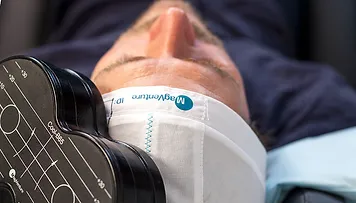

What Is TMS?
Transcranial Magnetic Stimulation Therapy (TMS) is a safe and proven non-drug treatment for depression and obsessive compulsive disorder (OCD). TMS treatment works by sending magnetic pulses that stimulate neurons in the area of the brain responsible for mood. TMS is FDA-cleared and non-invasive.
Who Can Get TMS Treatment?
Patients who are 18 years or older and have Major Depressive Disorder or OCD may be candidates for TMS treatment if they have failed to receive satisfactory improvement from prior antidepressant medications. Doctors will use medication dosing records and screening scores among other measures to determine if TMS is the right solution.
What To Expect:
Your First Session
A TMS-trained provider will be with you during your first session to complete the initial treatment set up.
During The Procedure
Everyone tolerates procedures differently. At ARC Psychiatry, we want to help make this experience as comfortable as we can. Below are options available to you to help ease any tensions you may have:
A staff member will always be with you during the procedure to ensure you are comfortable. Never hesitate to speak up if you ever feel uneasy about the treatment.
Following The Procedure
The great thing about this procedure is the ability to resume your normal daily routine – including driving! Some may experience mild headaches or slight discomfort where the stimulation was located. This is normal and typically lessens as treatments progress. If needed, you can treat these discomforts with over-the-counter pain relievers.
Typically, patients notice improvement around the fourth week of treatment. This varies for each patient. Continue to discuss your levels of depression, OCD symptoms, and/or anxiety with your provider so they can help monitor your progress.

© Copyright 2025. All Rights Reserved by ARC Wellness Center.